Bali, known for its stunning landscapes, vibrant culture, and beautiful beaches, is fast becoming a hub for remarkable underwater adventures. With its crystalline waters, vivid marine life, and explosive colors, Bali is more than just an iconic island. It’s a diver’s heaven and a scuba photographer’s paradise. From thrilling exploration to scuba diving, let’s uncover the reasons why Bali’s underwater photography is making waves in the industry.
Pioneering Bali Diving: A Tale of Growth
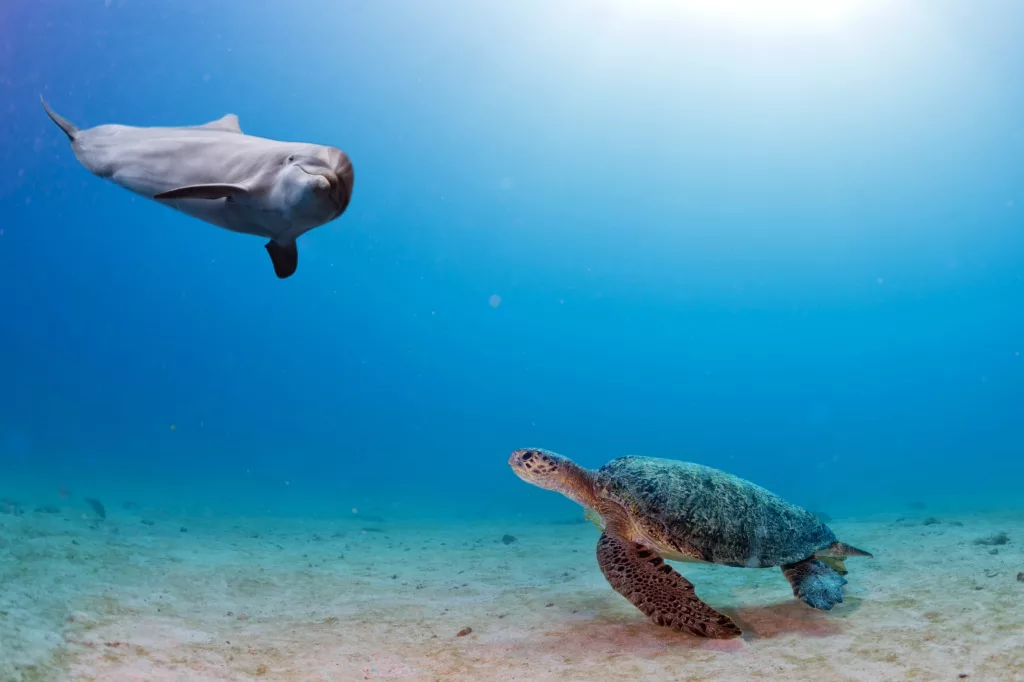
Bali, aptly nicknamed the “Island of the Gods,” has emerged as a haven for diving enthusiasts from around the globe. Its pristine waters and thriving marine ecosystems have made it a magnet for both novice divers seeking adventure and seasoned veterans in search of new challenges.
But diving in Bali offers more than just adrenaline-fueled escapades beneath the waves. It provides a unique opportunity to witness and capture the astounding diversity of marine life that inhabits its coral reefs and underwater landscapes. From vibrant coral gardens teeming with tropical fish to majestic sea turtles gliding gracefully through the water, every dive is an opportunity to marvel at the wonders of the underwater world.
Beyond the thrill of exploration, diving in Bali serves as a powerful platform for promoting marine conservation. Through sustainable diving practices and educational initiatives, divers and dive operators alike are raising awareness about the importance of preserving Bali’s fragile marine ecosystems. By showcasing the beauty and biodiversity of Bali’s underwater world, diving activities are not only attracting tourists but also highlighting the need to protect these precious natural resources for future generations.
Indeed, the growth of Bali’s diving scene is emblematic of the delicate balance between environmental preservation and economic development. As tourism continues to thrive, efforts to conserve Bali’s marine biodiversity are essential to ensuring the long-term sustainability of the island’s economy and ecosystem.
In conclusion, diving in Bali offers a unique blend of adventure, discovery, and conservation. It’s a journey into the heart of one of the world’s most biodiverse marine environments, where every dive tells a story of beauty, resilience, and the ongoing struggle to protect our planet’s precious oceans.
Bali’s Vibrant Marine life: A Photographer’s Dream
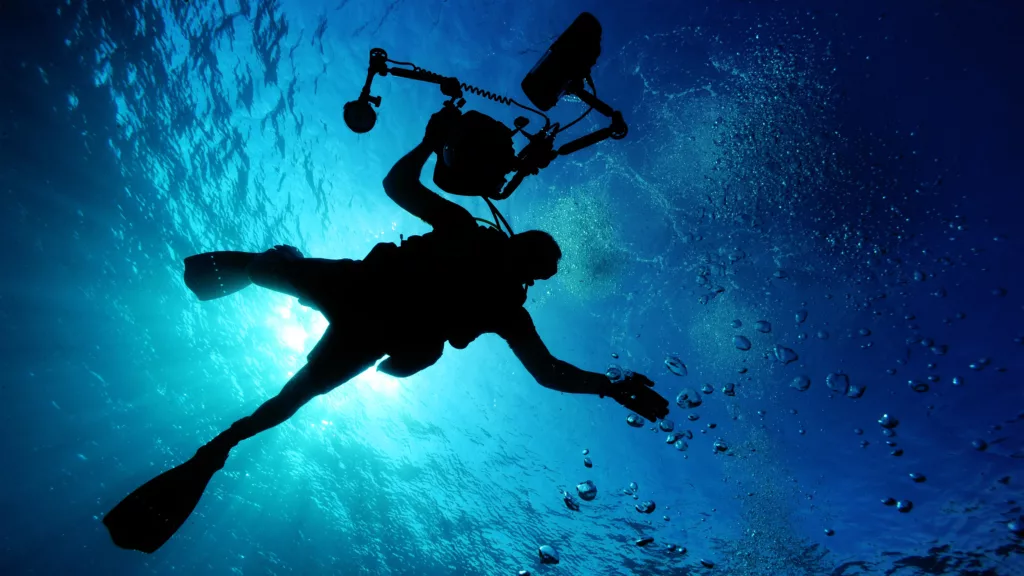
In the aquamarine depths of Bali’s tropical waters lies a photographer’s dream come true. This island paradise is not just a haven for scuba divers; it’s a canvas for underwater photographers seeking to capture the mesmerizing beauty of its marine life. With its kaleidoscope of colors and diverse array of species, Bali offers endless opportunities for stunning underwater photography.
Imagine swimming amidst vibrant coral reefs adorned with a plethora of marine creatures, from graceful sea turtles gliding serenely through the water to schools of shimmering fish darting in and out of the coral formations. Every dive in Bali is a chance to capture these magical moments and immortalize them through the lens of a camera.
But beyond their aesthetic appeal, these photographs play a vital role in raising awareness about the importance of marine conservation. By showcasing the stunning beauty and diversity of Bali’s underwater world, photographers help to inspire others to appreciate and protect these fragile ecosystems.
From the intricate patterns of a nudibranch to the majestic presence of a manta ray, each underwater encounter offers a new opportunity to capture the wonders of Bali’s marine life. And as these images find their way into magazines, exhibitions, and social media platforms, they serve as powerful reminders of the need to preserve and protect our oceans for future generations.
In Bali, underwater photography is more than just a hobby; it’s a way of capturing the essence of this magical island and sharing it with the world. So grab your camera, dive into the crystal-clear waters of Bali, and let the beauty of its marine life inspire you to create stunning images that will leave a lasting impression on all who see them.
The Trend in Techniques: How It’s Done?
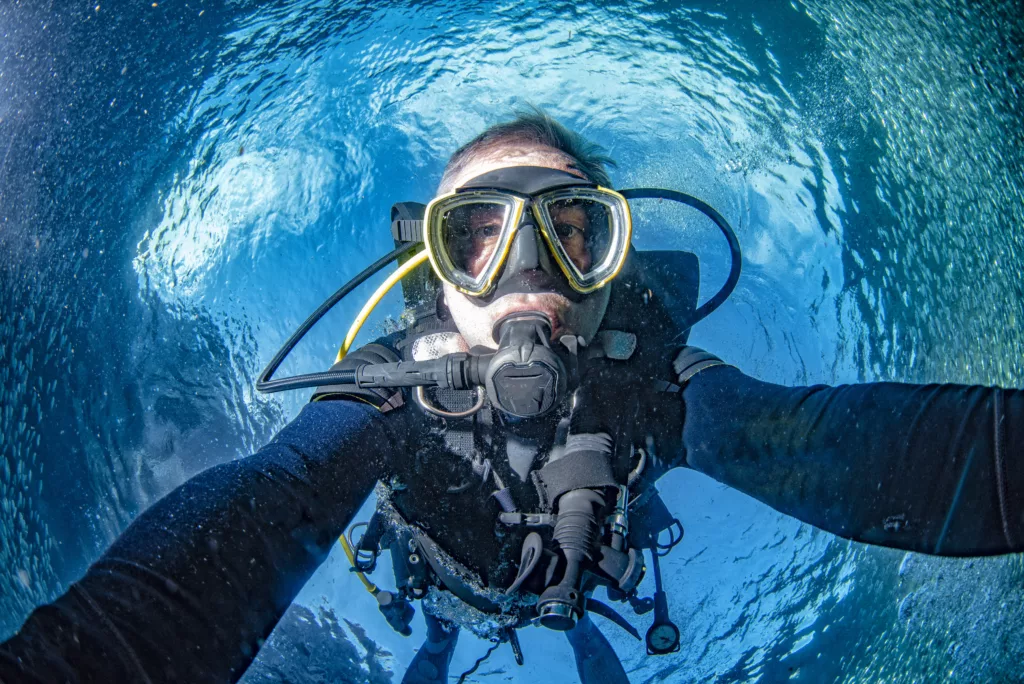
In the realm of underwater photography, innovation knows no bounds, especially in a place as diverse and captivating as Bali. Modern trends in underwater photography are pushing the boundaries of creativity, utilizing a myriad of techniques to capture the stunning marine life and unique dive sites that this tropical paradise has to offer.
One of the most popular techniques among underwater photographers is wide-angle photography, which allows them to capture the grandeur of larger subjects such as manta rays against the backdrop of the vibrant coral landscapes. These wide-angle shots not only showcase the beauty of Bali’s marine life but also provide viewers with a sense of the expansive underwater environment.
On the other end of the spectrum, macro photography is gaining popularity for its ability to highlight the intricate details of smaller aquatic subjects. From the delicate patterns of a pygmy seahorse to the vibrant colors of a nudibranch, macro shots allow photographers to showcase the often-overlooked beauty of Bali’s underwater world.
But it’s not just about traditional photography techniques anymore. Innovative methods such as motion blur, silhouettes, and over-under split shots are becoming increasingly common, adding a dynamic and artistic element to underwater photography. These techniques allow photographers to capture the fluidity of motion, the drama of light and shadow, and the unique perspective of life above and below the waterline.
As underwater photography continues to evolve, driven by the creativity and ingenuity of photographers, it remains an ever-exciting and dynamic domain. With each dive in Bali’s turquoise waters, photographers have the opportunity to experiment with new techniques, push the boundaries of their craft, and capture the awe-inspiring beauty of Bali’s marine life in all its glory.
Must-Visit Dive Sites in Bali: Take the Plunge
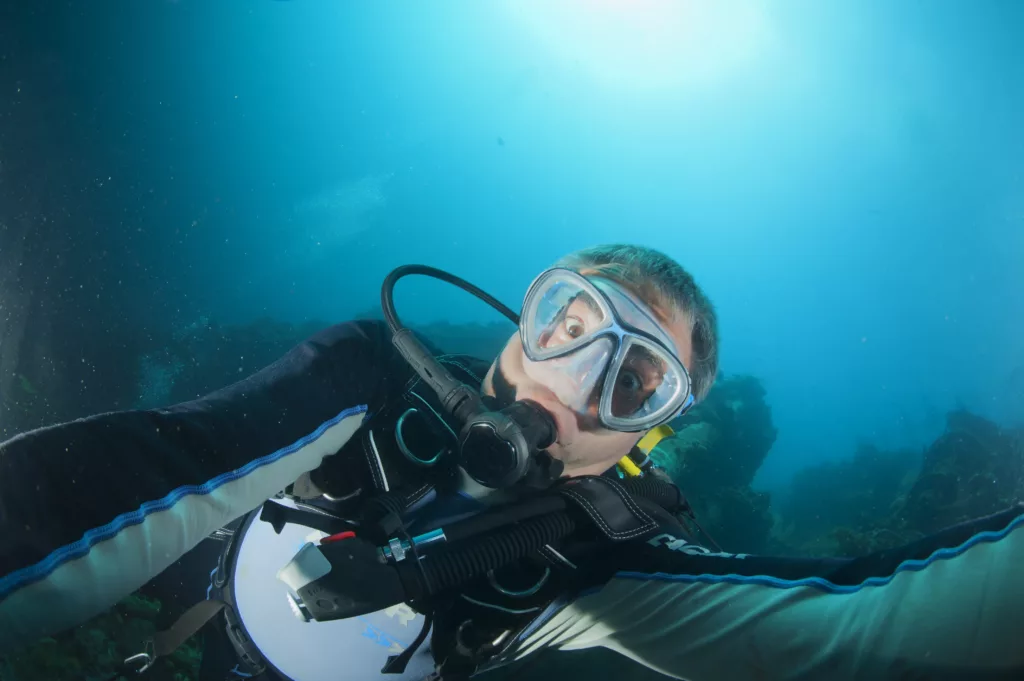
Bali stands as a beacon for underwater enthusiasts, boasting an impressive array of dive sites that promise unforgettable adventures beneath the waves. Whether you’re drawn to the historical allure of the USS Liberty Wreck in Tulamben, the exhilarating drift dives of Nusa Penida, or the serene beauty of the submerged temple in Amed, Bali offers a diverse tapestry of underwater landscapes just waiting to be explored and captured through the lens.
The USS Liberty Wreck, a poignant relic of WWII history, now serves as a vibrant artificial reef teeming with life. Its massive hull, draped in colorful corals and inhabited by a kaleidoscope of marine creatures, offers a dramatic backdrop for stunning underwater photography. Meanwhile, the adrenaline-spiking drift dives of Nusa Penida beckon with the promise of close encounters with majestic marine life, from graceful manta rays to elusive oceanic sunfish.
For those seeking a more tranquil underwater experience, the submerged temple in Amed provides a serene setting for capturing the ethereal beauty of Bali’s underwater world. The temple’s ornate structures, now adorned with vibrant corals and swaying sea fans, offer a glimpse into a mystical underwater realm that captivates the imagination.
Each dive site in Bali unveils a unique facet of the island’s underwater wonderland, promising divers and photographers alike a fresh and captivating experience with every visit. Diving in Bali isn’t just about exploring the depths; it’s about immersing yourself in nature’s underwater extravaganza and capturing its heart through the lens of your camera.
Breaking the Surface: The Future of Bali Underwater Photography
Bali’s underwater photography scene is making waves, emerging as a dynamic force that transcends mere imagery to become a powerful tool for conservation and tourism promotion. With each click of the camera shutter, photographers capture the mesmerizing beauty of Bali’s marine life, from the vibrant coral reefs to the majestic creatures that inhabit them. But beyond simply documenting the underwater world, these photographs play a crucial role in raising awareness about marine conservation issues and showcasing the island’s rich biodiversity to the world.
In recent years, Bali has seen a surge in underwater photography enthusiasts, drawn to its diverse dive sites and abundant marine life. From wide-angle shots that capture sweeping seascapes to macro photography that reveals the intricate details of tiny critters, photographers are constantly pushing the boundaries of creativity to capture the essence of Bali’s underwater realm.
But it’s not just about snapping stunning photos – it’s also about using those images to inspire action. Through social media, photography exhibitions, and conservation campaigns, Bali’s underwater photographers are amplifying their voices and advocating for the protection of the marine environment. By showcasing the beauty of Bali’s underwater world, they’re reminding us all of the importance of preserving these fragile ecosystems for future generations.
Moreover, the popularity of underwater photography is also boosting Bali’s tourism industry, attracting divers and snorkelers from around the globe who are eager to explore the island’s aquatic wonders firsthand. Dive operators, resorts, and local businesses are capitalizing on this trend, offering specialized photography tours, workshops, and accommodations tailored to underwater enthusiasts.
In essence, Bali’s underwater photography scene isn’t just about capturing pretty pictures – it’s about harnessing the power of imagery to promote conservation, drive tourism, and celebrate the awe-inspiring beauty of the underwater world. As the popularity of underwater photography continues to grow, Bali’s marine life will remain in the spotlight, inspiring wonder, awe, and a renewed commitment to protecting our oceans.

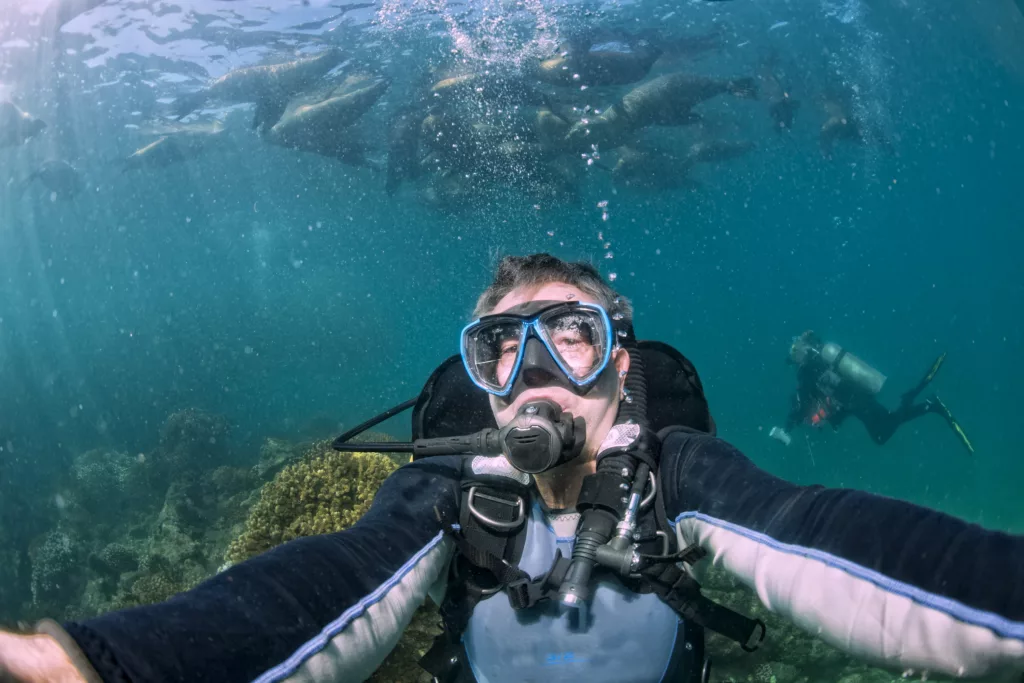
I’ve always been fascinated by Bali’s underwater world. The vibrant marine life, the coral reefs, and the historic wrecks make it a paradise for divers and photographers alike.
Thank you for sharing your fascination with Bali’s underwater world! We’re thrilled to hear that our resort has dedicated training facilities for local staff and around us, which not only provides a good experience to our guests but also makes a real impact at the local level through education and job opportunities. You can visit us anytime to learn more about our mission to change the world, one resort at a time! If you have any questions or would like to know more about our dive packages and courses, please don’t hesitate to contact us via email at [email protected] or phone at +62 857 3891 8262. We look forward to hearing from you!
Immersive and fascinating post! The way the blog portrayed the underwater beauty of Bali, and the importance of its conservation was truly insightful. Makes me want to visit Bali and experience its underwater world!
The trend in underwater photography is indeed exciting! I love how Bali’s dive sites offer endless opportunities to capture the beauty of marine life. Can’t wait to plan my next dive trip there!
Hi Evelyn! Thank you for sharing your excitement about underwater photography in Bali. We’re thrilled to hear that you’re already planning your next dive trip! Our resort is always happy to help you make the most of your time in Bali. Feel free to reach out to us anytime at [email protected] or call +62 857 3891 8262 for any questions or bookings. We can’t wait to welcome you back and share more underwater adventures together!
I’m blown away by the stunning photos in this article! Bali’s underwater world is truly a treasure trove of marine life. I’ll definitely be back to explore more dive sites and capture some amazing shots myself.
Thank you for your kind words, Faisal! We’re thrilled to hear that our article has inspired you to explore more of Bali’s underwater world. As you plan your next dive adventure, don’t hesitate to reach out to us at [email protected] or +62 857 3891 8262 for any recommendations on dive sites, photography tips, or even joining one of our conservation efforts. We look forward to seeing more of your amazing photos and stories!.